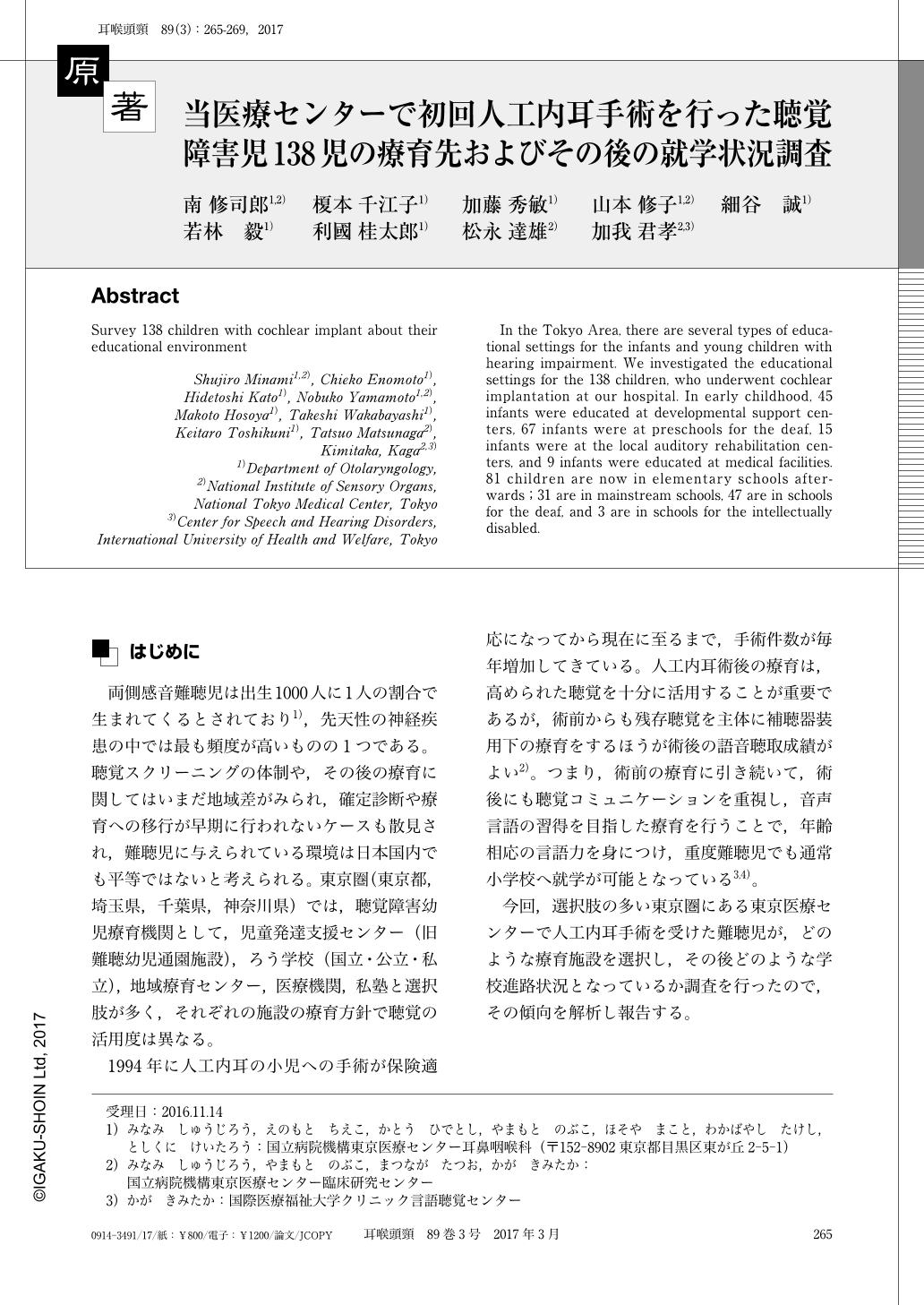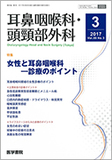Japanese
English
- 有料閲覧
- Abstract 文献概要
- 1ページ目 Look Inside
- 参考文献 Reference
はじめに
両側感音難聴児は出生1000人に1人の割合で生まれてくるとされており1),先天性の神経疾患の中では最も頻度が高いものの1つである。聴覚スクリーニングの体制や,その後の療育に関してはいまだ地域差がみられ,確定診断や療育への移行が早期に行われないケースも散見され,難聴児に与えられている環境は日本国内でも平等ではないと考えられる。東京圏(東京都,埼玉県,千葉県,神奈川県)では,聴覚障害幼児療育機関として,児童発達支援センター(旧難聴幼児通園施設),ろう学校(国立・公立・私立),地域療育センター,医療機関,私塾と選択肢が多く,それぞれの施設の療育方針で聴覚の活用度は異なる。
1994年に人工内耳の小児への手術が保険適応になってから現在に至るまで,手術件数が毎年増加してきている。人工内耳術後の療育は,高められた聴覚を十分に活用することが重要であるが,術前からも残存聴覚を主体に補聴器装用下の療育をするほうが術後の語音聴取成績がよい2)。つまり,術前の療育に引き続いて,術後にも聴覚コミュニケーションを重視し,音声言語の習得を目指した療育を行うことで,年齢相応の言語力を身につけ,重度難聴児でも通常小学校へ就学が可能となっている3,4)。
今回,選択肢の多い東京圏にある東京医療センターで人工内耳手術を受けた難聴児が,どのような療育施設を選択し,その後どのような学校進路状況となっているか調査を行ったので,その傾向を解析し報告する。
In the Tokyo Area, there are several types of educational settings for the infants and young children with hearing impairment. We investigated the educational settings for the 138 children, who underwent cochlear implantation at our hospital. In early childhood, 45 infants were educated at developmental support centers, 67 infants were at preschools for the deaf, 15 infants were at the local auditory rehabilitation centers, and 9 infants were educated at medical facilities. 81 children are now in elementary schools afterwards;31 are in mainstream schools, 47 are in schools for the deaf, and 3 are in schools for the intellectually disabled.

Copyright © 2017, Igaku-Shoin Ltd. All rights reserved.


